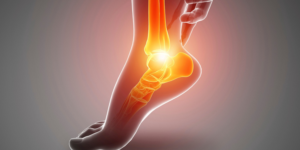
Treating Plantar Fasciitis Without Steroid Injections
Treating Plantar Fasciitis Without Steroid Injections If you’ve ever felt sharp heel pain with your first morning steps, you’re not alone. Plantar fasciitis—inflammation of the

Athletes live for the game—the adrenaline, the competition, the victory. But nothing halts momentum faster than a sports injury. From sprained ankles to torn ligaments, these setbacks can be both physically painful and emotionally draining. While rest is often prescribed, one of the most powerful tools for speeding recovery is physiotherapy. In fact, many sports injuries heal significantly faster when treated with physiotherapy than with rest alone.
If you’re an athlete or active individual looking to get back in the game sooner, let’s explore which injuries benefit most from physiotherapy and why it’s the go-to approach for optimal recovery.
Physiotherapy isn’t just about rehab—it’s about active healing. While rest may reduce pain temporarily, it doesn’t address the root causes of an injury. Physiotherapy, on the other hand:
Strengthens weakened muscles
Restores flexibility and joint mobility
Improves circulation for faster tissue healing
Retrains movement patterns to prevent reinjury
Boosts overall performance once healing is complete
It’s a structured, science-backed approach to recovery that helps athletes not only heal faster but return stronger.
Certain injuries respond especially well to physiotherapy. Here are some of the most common:
One of the most frequent sports injuries, ankle sprains can sideline an athlete for weeks. Physiotherapy uses balance training, proprioception exercises, and targeted strengthening to restore stability. Without physiotherapy, sprains often heal poorly, leaving the ankle vulnerable to repeated injuries.
Hamstrings are notorious for reinjury if not rehabilitated properly. Physiotherapy focuses on eccentric strengthening exercises, mobility drills, and gradual loading to ensure the muscle heals correctly. This not only speeds recovery but significantly reduces recurrence rates.
From weekend warriors to professional athletes, knee injuries are common and serious. Physiotherapy helps by:
Reducing swelling and stiffness
Restoring proper alignment and mechanics
Strengthening surrounding muscles like the quadriceps and glutes
With structured rehab, many partial ligament tears and meniscus injuries heal faster, and even post-surgical recovery is greatly improved.
Overuse injuries like tennis elbow (lateral epicondylitis) and golfer’s elbow (medial epicondylitis) respond particularly well to physiotherapy. Techniques such as eccentric loading, soft tissue release, and mobility work promote faster healing compared to rest alone.
From rotator cuff tears to dislocations, shoulder injuries are debilitating for athletes. Physiotherapy applies joint mobilization, scapular stabilization, and strengthening exercises that help athletes regain pain-free range of motion faster.
Runners are all too familiar with shin splints. Rest can help, but physiotherapy addresses the root causes like poor biomechanics, tight calves, or weak hips. Corrective exercises and gait retraining shorten recovery time dramatically.
Achilles tendonitis or partial tears can be career-threatening if neglected. Physiotherapy incorporates progressive loading and eccentric heel drops, which are proven to accelerate tendon healing and restore explosive power.
Athletes dealing with lower back pain or herniated discs can benefit greatly from physiotherapy. Through core strengthening, posture correction, and mobility training, physio not only speeds recovery but helps prevent long-term complications.
| Approach | Rest Alone | Physiotherapy |
|---|---|---|
| Pain Management | Relieves pain temporarily | Relieves pain and restores function |
| Muscle Strength | Weakens over time | Strengthens and stabilizes injured area |
| Joint Mobility | Stiffness often develops | Maintains and restores range of motion |
| Healing Speed | Slow and passive | Faster and active through improved circulation |
| Risk of Reinjury | Higher, due to incomplete healing | Lower, due to functional training and correction of movement |
Physiotherapists often use hands-on techniques such as:
Soft tissue massage to reduce muscle tightness
Joint mobilizations to restore normal movement
Trigger point therapy to ease referred pain
Dry needling or cupping (in some clinics) for circulation and healing
These interventions complement exercise therapy and give athletes a head start in recovery.
One of the biggest benefits of physiotherapy is prevention. By identifying weaknesses, imbalances, and faulty mechanics, physiotherapists teach athletes how to move better, reduce strain, and avoid reinjury.
For example:
Runners learn proper gait mechanics
Swimmers work on shoulder stabilization
Weightlifters refine posture and lifting technique
Physiotherapy is as much about performance optimization as it is about recovery.
Athletes new to physiotherapy often wonder what’s involved. A typical session includes:
Assessment: Injury history, biomechanics, and posture analysis
Treatment: Hands-on therapy, pain relief, and mobility work
Rehab Exercises: Customized strengthening and stretching plan
Education: Guidance on return-to-sport timelines and self-care
This personalized approach ensures every athlete gets exactly what they need for safe and speedy healing.
While physiotherapy can heal most sports injuries faster, some severe cases may still require surgery. However, even in these cases, pre-surgical physiotherapy (“prehab”) strengthens the body beforehand, and post-surgical rehab ensures better outcomes and faster return to sport.
The evidence is clear: physiotherapy doesn’t just help sports injuries heal—it helps them heal faster, stronger, and with fewer setbacks. Whether you’re a professional athlete or a weekend warrior, investing in physiotherapy could mean the difference between months on the sidelines and a swift, confident return to the game.
How soon should I start physiotherapy after a sports injury?
Ideally, as soon as possible. Early intervention speeds healing and prevents complications.
Can physiotherapy replace surgery for sports injuries?
In many cases, yes. Partial tears, sprains, and overuse injuries often heal without surgery when treated with physiotherapy.
How many physiotherapy sessions will I need?
It depends on the severity of the injury, but most athletes see improvement within 4–6 weeks of consistent sessions.
Is physiotherapy safe for young athletes?
Absolutely. Physiotherapy is safe, effective, and often recommended for children and teens recovering from sports injuries.
Does insurance cover physiotherapy for sports injuries?
Most health insurance plans cover physiotherapy when prescribed for injury recovery.
Can I continue training while doing physiotherapy?
Yes, but usually with modifications. Your physiotherapist will guide you on safe levels of activity.
Sports injuries that heal faster with physiotherapy prove the power of active recovery. From sprains to tendon tears, physiotherapy helps athletes regain strength, mobility, and confidence—often faster than rest or medication alone. It’s not just about healing—it’s about preventing setbacks and optimizing performance for the long run.
If you want to shorten downtime, avoid surgery, and get back to doing what you love, physiotherapy should be your first step toward recovery.

Treating Plantar Fasciitis Without Steroid Injections If you’ve ever felt sharp heel pain with your first morning steps, you’re not alone. Plantar fasciitis—inflammation of the

Best Home Exercises to Support Your Physio Progress When you walk out of a physiotherapy session, the real work isn’t over—it’s just beginning. Continuing your

The Science Behind Osteopathy: A Deep Dive for Patients Osteopathy often sparks curiosity among those searching for safe and effective pain relief methods. While its